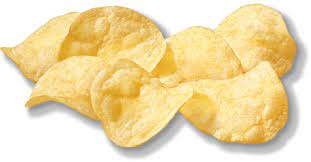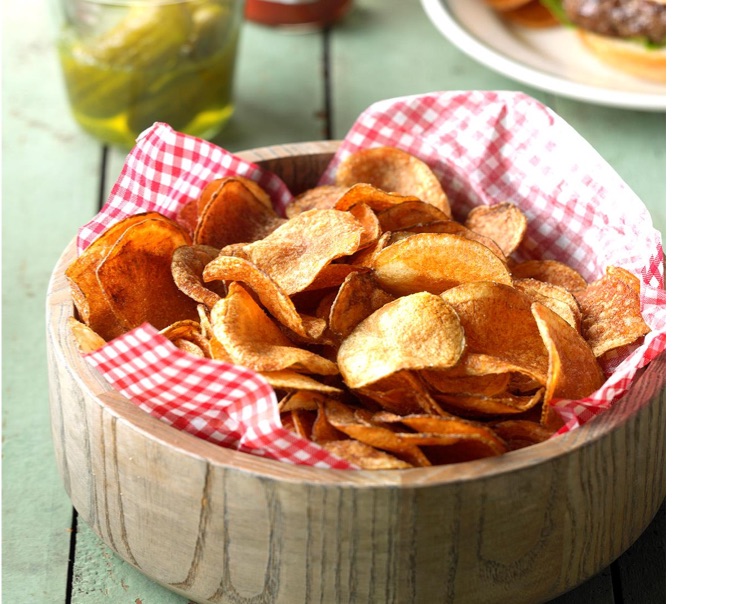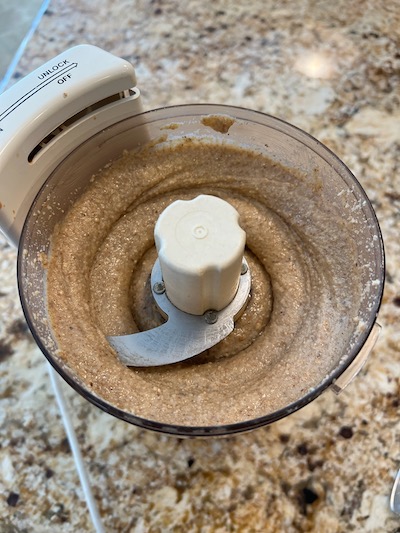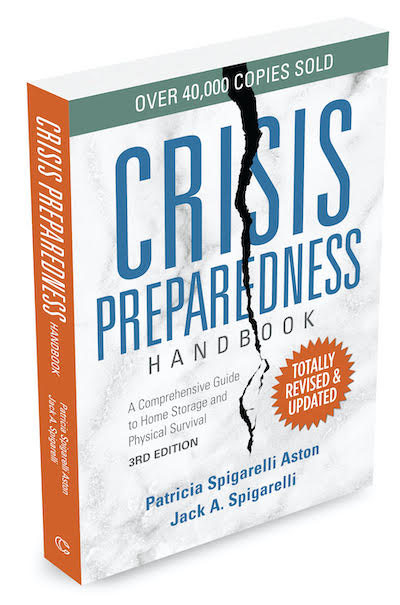
Week 42 Preparedness Challenge
This week the preparedness challenge is to stock-up on special family treat items. What are the special foods that add to your family traditions and bring a sense of well-being? In a crisis, these comforting foods can add a bit of normalcy.
This week add several bags of favorite family treats to your food storage.
What Are the Goodies That Your Family Loves?
You probably have a good idea of the special foods your family loves, but it might be helpful to begin by getting input from all members of your family and make a list of the favorite treats. Treats can be divided into two categories: savory treats and sweet treats.
Frequently Rotate Your Favorite Savory Treats
Savory treats like chips, nuts, and crackers often have a high oil content which makes them quickly become rancid or stale. Even though they have a short shelf life, they can still be good two or three months beyond their expiration date if stored properly. Choose items that have a printed shelf life as far out as possible. It is important to use and frequently rotate these perishable foods. To get the longest life from these treats, store them in a cool, dark place.
What is the Best Way to Store Chips and Snacks?

I am sure you have noticed that bags of chips are only about half full. There is a good reason for this.
Potato chips and other snack chips and crackers are packaged using nitrogen flushing. Regular atmospheric air (about 21% oxygen about 78% nitrogen) is flushed out and replaced with nitrogen gas. The process of nitrogen flusing is also known as Modified Atmosphere Packaging (MAP).
This process creates a nearly oxygen-free environment which slows down the oxidation process and keeps the oils in chips and crackers from becoming rancid and prevents the growth or decay and mold. This gives these products a longer expiration date and increased shelf life.
The high concentration of nitrogen gas in the bag not only decreases oxidation significantly but also cushions the chips and protects them from getting crushed.
Once a bag of chips is opened, do what you can to minimize exposure to oxygen by quickly resealing the package. Secure with a clip or place in a resealable bag. And, of course, eat them as quickly as possible.
TIPS FOR STORING CHIPS AND SNACKS

- Keep chips in their original packaging until ready to use.
- Store unopened packages of chips in a cool, dark location.
- Store packages of chips in a pantry or food storage room in large airtight plastic containers to add extra protection.
- Tightly fold and reseal opened packages by securing with a clip.
Make Your Own Chips at Home
You have probably eaten freshly-made gourmet potato chips at a restaurant. More robust than packaged chips, they can also be made at home. In an emergency it is nice to know that you can make your own chips to help with menu boredom. (Below recipe Adapted from Taste of Home)

- Use fresh, crisp russet potatoes, or another high-in-starch potato.
- Thinly slice potatoes with a potato peeler, a cheese slicer, or a mandolin on the thinnest setting.
- Place slices in ice water. This is an important step because it removes excess starch and closes off cells so chips will be crisp and not stick together.
- Add one to two tablespoons of salt to water.
- Thoroughly pat slices using absorbent kitchen towels before frying.
- Deep fry in batches in vegetable oil heated to 375 degrees until golden brown, about three to four minutes.
- Use a slotted spoon to remove chips from oil and drain on paper towels.
- Sprinkle with salt or seasoning salt and your choice of herbs such as pepper, garlic, and paprika.
Tips for Storing Nuts and Seeds

Besides being a delicious treat, nuts and seeds are important ingredients in baked goods, main dishes, and salads. They are a great source of fats, protein, antioxidants, fiber, and other nutrients. But like chips, their high fat content makes them prone to becoming rancid, so they are best kept in a short rotation. They need protection from oxygen, light, and high temperatures as well as excess moisture, which can encourage mold.
SHELLS PROTECT NUTS
Hard-shelled nuts, including almonds, Brazil nuts, filberts, pecans, and walnuts are somewhat protected by their shells and may last two years if stored unshelled in metal or plastic containers in cool, dry conditions. Ideally, store them in airtight containers with oxygen absorbers.
PURCHASE FRESH NUTS TO START WITH
It might be tempting to purchase nuts from bulk bins in the grocery store because their price is often lower than packaged nuts. The problem is, there is no way to know how long the nuts have been in the bins. Oxygen in the air causes oxidation, and heat and light speed up the process. It is better to buy nuts in sealed containers or thick plastic bags if you plan to store them for any length of time.
RECOMMENDATIONS FOR STORING NUTS
The best way to store shelled nuts is in the freezer in resealable bags or airtight containers. This preserves flavor and texture, prevents oxidation and insect infestation, and will prolong their shelf life significantly. They will last for at least two years.

The second choice is to store nuts in the refrigerator in resealable bags or an airtight container for up to a year. They may take up more room than you can spare in your refrigerator, so it will depend on your circumstances whether you store them there.
If you store nuts in a pantry or storage room, use them in six months to a year. Store them in resealable bags or airtight containers. Keep them away from strong-smelling foods such as onions.
Make Your Own Homemade Nut Butter
Specialized nut butters are delicious and are available in many grocery and warehouse stores. They are also super easy to make yourself! Nothing could be simpler. In less than five minutes one cup of nuts turns into a half cup of delicious, spreadable nut butter. Give it a try!

You need a small food processor and follow these easy steps:
- Put one cup of lightly salted mixed nuts with peanuts into a small food processor such as the Cuisinart Mini-Prep Food Processor.
- Secure the lid and turned it on—The nuts grind quickly into a dry nut flour, but keep the processor running and within a few minutes the nut oils started to blend in.
- Blend until nut butter is the consistency you desire.
- Remove nut butter and store in the pantry for up to a month.
- Experiment using any combination of your favorite nuts.
- Customize the nut butters with sesame seeds, flax seeds, sesame seeds, and chia seeds.
Crackers That Have a Low-Fat Content Store Longer

The best-tasting crackers usually have a higher fat content. However, fat in the crackers oxidizes and makes the crackers rancid. Choosing crackers lower in fat can give you a longer-lasting cracker. Check out the lists of crackers and the amount of fat grams per serving to help you make the best choice.
Crackers Lower in Fat and Grams of Fat per Serving:
Wasa Light Rye Crisp Bread (0 grams)
Carr’s Table Water Crackers (1 gram)
Nabisco Saltines (1.5 grams)
Rold Gold Pretzels (2 grams)
Triscuit Reduced Fat (2.5 grams)
Honey Maid Graham Crackers (3 grams)
Crackers Higher in Fat and Grams of Fat per Serving:
Triscuit Original (3.5 grams of fat)
Wheat Thins (5 grams)
Goldfish (5 grams)
Nabisco Ritz Crackers (4.5 grams of fat)
Cheez-It Original Snack Cracker (8 grams)
Cheetos (11 grams)
Safe Methods for Preserving Crackers
REPACKAGE CRACKERS TO INCREASE SHELF-LIFE
Crackers are typically packaged in waxed paper inside light-weight cardboard boxes and have a shelf-life of six to nine months. To increase their shelf life, repackage crackers in airtight containers and store in a cool place.
USE OXYGEN ABSORBERS
For a longer storage life, package crackers in Mylar bags or airtight Mason jars with oxygen absorbers to eliminate oxygen and limit oxidation. In humid areas, add a desiccant.
PERK-UP STALE CRACKERS
Crackers get stale when they absorb atmospheric moisture. Refresh stale crackers by first, spreading them in a thin layer on a cookie sheet. Next, spritz them lightly with water and then bake them for five to ten minutes in a 325-degree oven. Use them immediately.
VACUUM PACKING

Vacuum sealing machines such as Food Saver sell a jar sealing kit that can be used to remove air from dry canned goods. To use a vacuum sealer, place crackers in a Mason jar and with a canning lid and ring. Attach the vacuum sealer attachment to remove air from the jar and create a seal.
OVEN CANNING IS NOT A SAFE METHOD
Some advocate using dry canning to preserve dry foods like crackers in Mason jars that are then “processed” in the oven to form a seal. Although dry crackers will probably be safe using this method, it is not a recommended canning method by the National Center for Home Food Preservation, a recognized authority by university extensions.
Make Your Own Crackers at Home
To avoid having stale or rancid crackers, try making your own at home. Crackers are surprisingly easy to make from just a few ingredients that you will likely have in your pantry and refrigerator. The variations are endless. My two favorite sources for any kind of bread-type recipes are Breadtopia and King Arthur Baking. The recipe here is modified from King Arthur Baking.

- MIX TOGETHER
- 1 ½ cups whole wheat flour¾ teaspoon salt
- 1 teaspoon baking powder
- BLEND UNTIL RESEMBLES SAND
- 4 tablespoons unsalted butter, cold
- STIR IN AND BLEND WELL
- ½ cup milk
Knead dough until smooth, divide in half, wrap each ball in plastic and let rest for a half hour. Preheat oven to 375 degrees. Thinly roll out dough on parchment paper, making a 16” x 8” to 10” rectangle. Cut in desired cracker shapes. Lightly brush with olive oil and sprinkle with sea salt. Bake until golden, 10 to 15 minutes.
Suggestions for Storing Sweet Treats
CANDY THAT IS MOSTLY SUGAR
Sugar has a long shelf life, so candies with high sugar content also store a long time. Most candies do not have an expiration date, but instead, they may have a best-if-used-by date. Generally, the harder the candy, the longer the shelf life. Soft candies or candies with soft centers need protection to keep from drying out. Store both hard and soft candy in airtight containers or resealable freezer bags with as much air removed as possible and in a cool, dry location.
CANDY THAT IS MOSTLY CHOCOLATE
Solid chocolate has a best-if-used-by date, but can be used past this date. Heat and moisture are the biggest challenge for storing chocolate. If you can maintain a cool (chocolate stores best at 64 degrees), dry, and dark environment, chocolate will keep a long time. Avoid fluctuations in temperature.
Chocolate may get white-ish streaks called bloom. This is from cocoa butter in the chocolate melting and coming to the surface. Although the streaks are not ascetically appealing, they are not harmful. Fruits or nuts in chocolate may become rancid or dry out and will shorten its self-life. Like most foods, the best practice is to use and rotate foods and store them in a cool, dark place.
HOW TO FREEZE CHOCOLATE
Chocolate can be frozen for up to two years. To properly freeze chocolate, minimize temperature variations to prevent texture change. Follow these steps:

- Double wrap chocolate in plastic and put it in a separate container to prevent chocolate from absorbing other flavors.
- Place the chocolate in the refrigerator for 24 hours to minimize temperature shock.
- Move chocolate to freezer.
- Store in the freezer up to two years.
- To defrost, move from freezer to refrigerator and defrost gradually.
What Do You Need to Make Candy?
Candy can bring a little joy in a prolonged crisis. Of course, you can store various kinds of candy but it is also helpful to have the ingredients and tools that you need to make candy at home. Indispensable tools:
- Sturdy pot to prevent candy from burning
- Candy thermometer
- Pastry brush to wipe crystals off sides of pans.
- Silicone scrapers

Necessary ingredients for hard candy and fudge:
- Sugar
- Corn Syrup
- Flavorings
- Cocoa or unsweetened chocolate
- Canned evaporated milk (or cream)
Learn More

In my book Crisis Preparedness Handbook, Third Edition, find out more about preparing for a crisis or emergency. Learn more about storing other foods and how to preserve food for storage. Also learn about water storage, sanitation, communication, transportation, etc. Find it on my website CrisisPreparedness.com or on Amazon in a hard copy or Kindle.



1 thought on “Now Is the Perfect Time to Stock-Up on Treats”
hi this is ade. sup